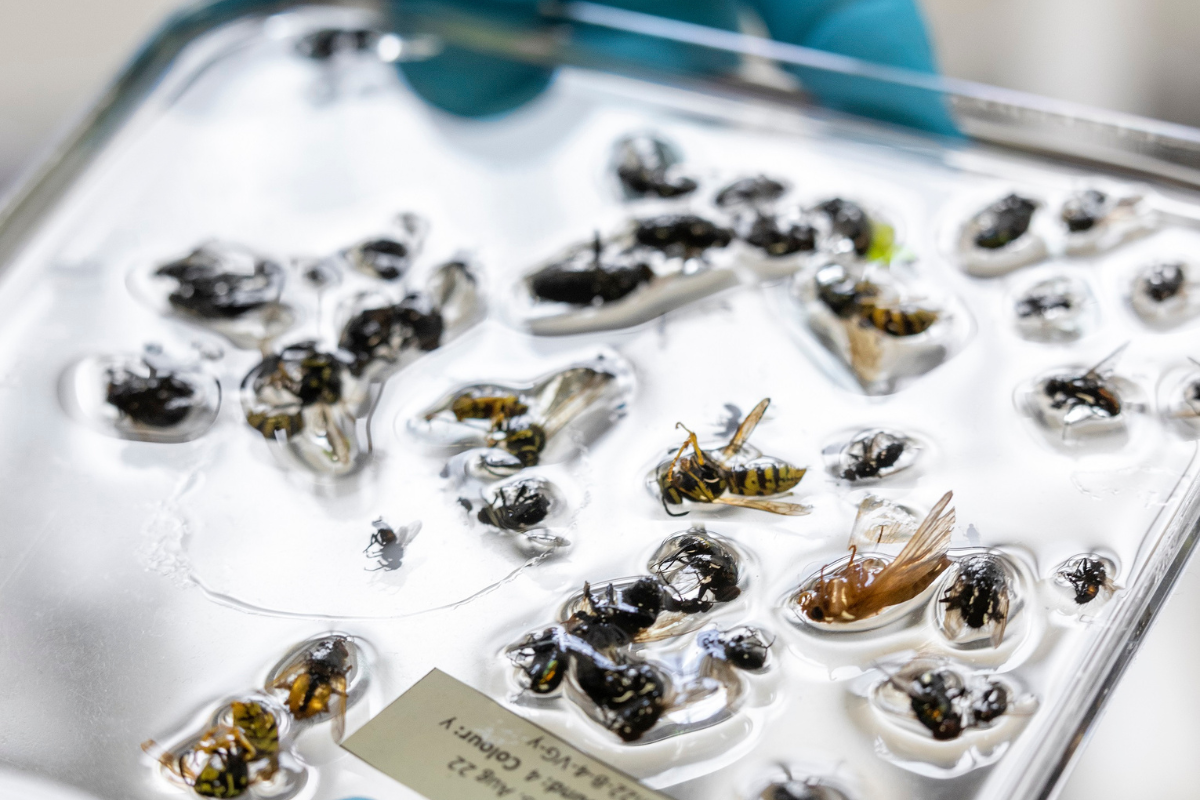Around 90 per cent of all species on earth are unknown. The Museum für Naturkunde Berlin is doing everything it can to discover the nameless before they become extinct – in Berlin as well as in the rainforest of Vietnam.
This article was first published in our journal For Nature (issue 7/2023).
At first glance, the cave in the Cuc Phuong National Park in northern Vietnam did not look spectacular. Behind a crevice overgrown by the rainforest was a narrow gorge at the bottom of which water gleamed greenish, presumably the offshoot of a water-bearing cave system branching out for kilometres in the karst rock. The research team squeezed through the narrow opening and climbed down to take samples. When they pulled the landing net out of the water again, they saw a small, almost transparent shrimp with colourless eyes hanging in the mesh.
"It was immediately clear to me that this must be something special that has adapted to living in caves in the dark," says biologist Thomas von Rintelen, an expert on shrimps and other freshwater creatures who heads the collection of molluscs, i.e. molluscs such as snails, mussels and squid, at the Museum für Naturkunde Berlin.
"The animal was blind, you could see that immediately, something like that was only known from China until then." Had they found a new species? That morning inside the karst cave, Vietnamese biologists placed the delicate crustacean in a glass of high-proof alcohol so that it could be examined more closely later in the laboratory. In the camp, they proudly presented the find to their colleagues who had been travelling to other places in the Cuc Phuong National Park. Each of the eleven teams spread out what they had discovered, passed around jars with samples and explained to the others what was special about the finds. They called this evening show "Catch of the Day":
There were butterflies, snails, ants, flies and plants as well as individual fish. "Every day we found several species that we assumed were new discoveries," says Thomas von Rintelen, who led the two-week field research in Vietnam together with Christoph Häuser from the Museum für Naturkunde Berlin.
The expedition was part of the VIETBIO training project, which provides Vietnamese biologists with the latest knowledge and technology in order to record the biodiversity in their country more quickly and protect it better. The project was funded by the Federal Ministry of Education and Research until the end of 2022, and is scientifically led by the Museum für Naturkunde Berlin in cooperation with the Botanical Garden Dahlem. Biodiversity surveying is a particularly rewarding task in Vietnam, as the country is one of the 20 countries with the highest biodiversity worldwide. Yet only a little more than 62,000 species have been documented here so far.
As in many other tropical countries, very little is known about species diversity in Vietnam, although it is precisely there that it is highest," says von Rintelen. In Cuc Phuong National Park, a hotspot within the hotspot, so to speak, where rare beauties such as the ruffed bear or the clouded leopard, a leopard-like big cat, also live, only a good 20,000 species have even been documented so far. "I would estimate that this is not even ten percent of what really lives there," says von Rintelen.
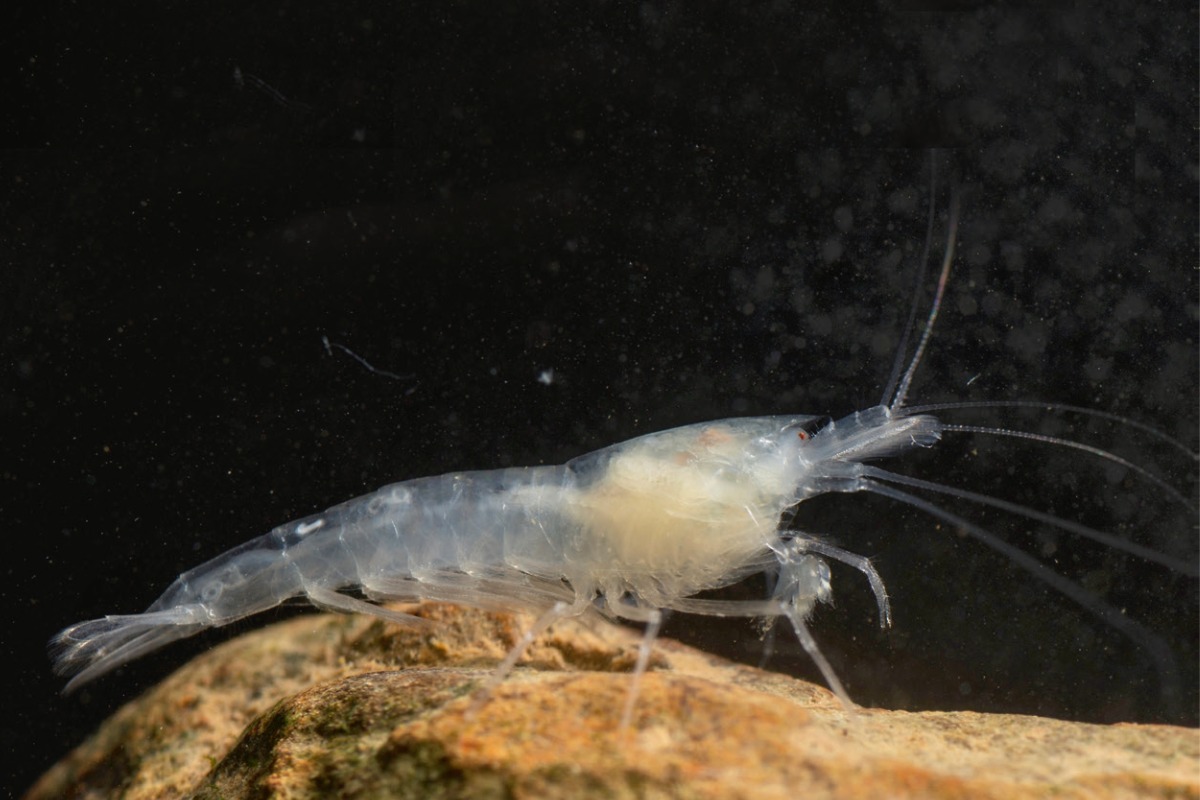
Robotics, artificial intelligence and DNA analyses against ignorance
One of the fundamental endeavours of biology has always been to find out who inhabits planet Earth. For 250 years, naturalists have set out to find new species, bring them to museums and describe them. But it is estimated that so far only ten, perhaps 20 per cent of all species found on Earth have been described: around 1.5 million. Especially in the case of small arthropods, which include insects and crustaceans, and microorganisms, there are huge gaps in our knowledge. Sufficient ecological data on the distribution or population of just 80,000 species are available.
This makes it difficult to assess which animal species are endangered – and should therefore be protected. We humans think we are clever. But basically Homo sapiens is an ignoramus who does not even understand with whom he shares his home. To preserve the balance of life on this planet in the long term, a new age of discovery is needed. "At the moment, humans are destroying biodiversity faster than they understand it," says von Rintelen.
Worldwide, around 20,000 species are currently discovered every year. "But we would have to describe several hundred thousand to discover no fewer than are currently becoming extinct." Together with biologist Rudolf Meier, Thomas von Rintelen has been heading the Centre for Integrative Biodiversity Discovery, founded in 2018, at the Museum für Naturkunde Berlin for two years. Its 40 scientists:inside are dedicated to using science and technology to combat the ignorance of Homo sapiens. At the centre, new methods are being developed that, through a combination of genetic analyses, robotics and artificial intelligence, should enormously accelerate the worldwide inventory of species – and also those on our doorstep.
At the same time, a process of self-inventory begins. The millions of samples stored in the collection of the Museum für Naturkunde Berlin, some of which are centuries old, are to be digitally recorded bit by bit and the "ancient DNA" slumbering in them researched by genomic sequencing and made globally available. Because for the identification and discovery of new species, it is important to know what is already available. This is one of the reasons why 73 natural history museums and herbaria around the world joined forces in March 2023 under the auspices of the Museum für Naturkunde Berlin to form the "ONE World – ONE Collection" initiative.
The unbelievable number of 1.1 billion objects in their combined collections is to be made accessible to everyone for the first time via a central global catalogue. This will create a broad natural history knowledge base to better respond to the crises of our time. The researchers at the Centre for Integrative Biodiversity Discovery are already working feverishly to gather as much knowledge as possible about the distribution and threats of biodiversity.
"At the moment, ecosystems are still functioning and are amazingly robust, even though locally many species are going extinct, but we can no longer rely on that," says von Rintelen. "At some point it can be one unknown species too many that goes extinct, and as humans we are at the top of the food chain depending on everything else working."
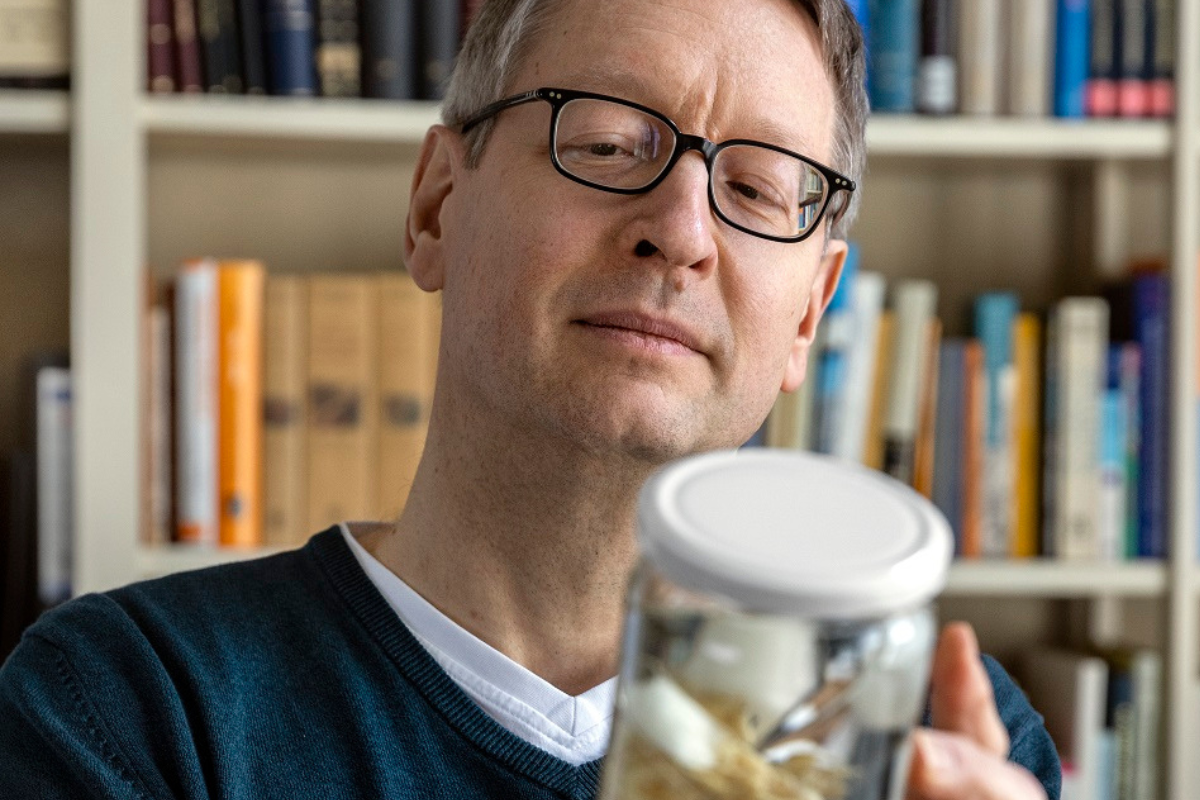
Not even in Berlin are we aware of exactly what lives around us
Rudolf Meier places a sample glass on the table in front of him. Countless small insects swim around in it in an alcohol solution. They come from a "Malaise trap", which was not set up in the rainforest in Vietnam, but in the backyard of the Museum für Naturkunde Berlin. Ten such tent traps are spread all over the city, in Kreuzberg, Mitte, Köpenick, to enable a kind of census of Berlin's insect species. "There are probably around 500 species in this jar, including possibly some undescribed ones that are smaller than five millimetres," says Meier. "That's the order of magnitude we are least aware of because hardly anyone is researching or interested in them – a bit on the principle of' out of sight out of mind."
Meier, who is an expert on insects and wrote his doctoral thesis on flies, has come from Singapore to the Centre for Integrative Biodiversity Discovery at the Museum für Naturkunde Berlin in 2021 to revolutionise the recording of biodiversity from here. He wants to finally focus on all the small invertebrate creatures that receive too little attention, even though they make up a large part of the biomass and biodiversity of the earth's animal world.
Insects in particular, no matter how small, perform irreplaceable functions in ecosystems. But even without earthworms and microorganisms, there would be no soil to nourish plants. In Germany, the "Krefeld Study" of 2017 provided shocking findings in this regard: Between 1989 and 2016, the biomass of flying insects had declined by 76 per cent. "This is a bit like flying in a jumbo jet, from which we constantly dismantle parts and throw them out of the window, without being aware of what function they have and when the plane will crash," says Meier.
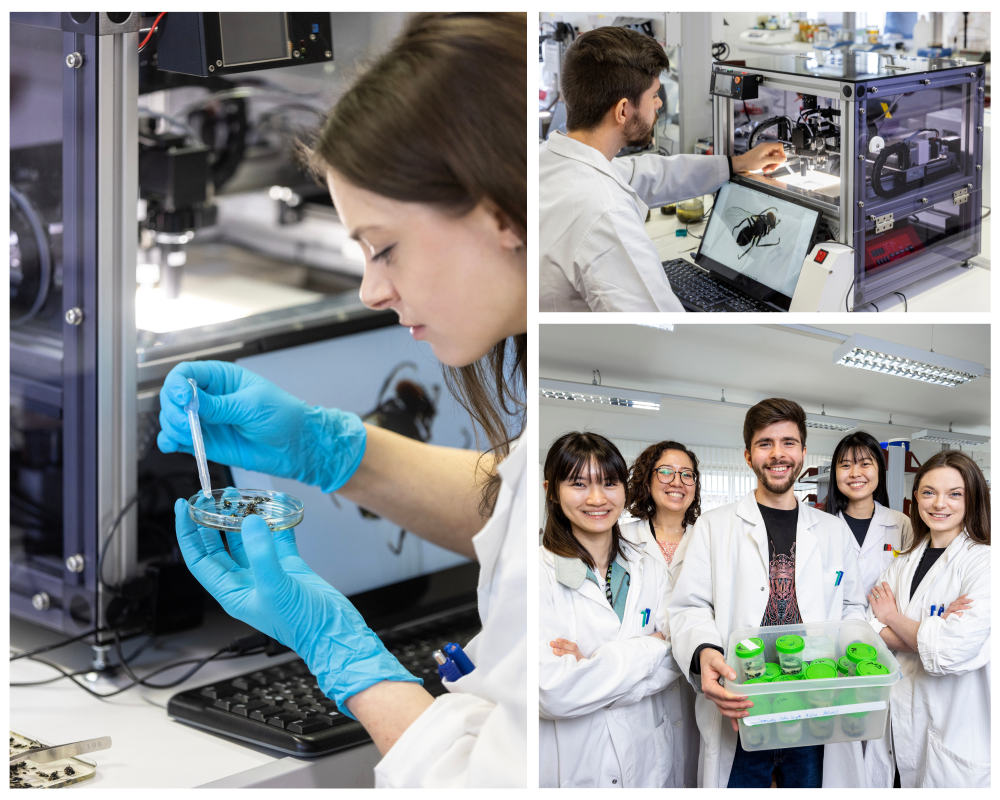
A sophisticated method to quickly record biodiversity – and safeguard it
To avoid the crash, Meier is developing an industrialised method for recording insect diversity at the Museum für Naturkunde Berlin and in cooperation with Professor Christian Pylatiuk from the Karlsruhe Institute of Technology. In the machine called "DiversityScanner", colourfully mixed samples of insects can be placed in a Petri dish at the front, which are then photographed and come out individually sorted at the back. In the future, the DiversityScanner will also be able to identify these animals; the algorithms required for this are currently still being trained. A robot then places them in one of the 96 wells of a microplate to prepare them for genetic analysis. In the end, after genetic material has been taken from them for determination, they end up in high-tech cabinets that hold around 200,000 samples.
In the future, several DiversityScanners could process tens of thousands of animals every day. Initially only small insects, later also larger animals. Meier's team has run more than 6,000 insects from Berlin backyards and community gardens through the scanner on a test basis and found around 1,100 different species. "Our goal is that the artificial intelligence will eventually be so well trained that genetic analysis will no longer be necessary and species can only be determined through image analysis," says Meier. That would be faster and cheaper.
This form of image-based species recognition is already possible for birds, plants or butterflies. At the moment, the algorithms only manage to determine them down to the family or genus. "Species identification by image analysis would then enable biomonitoring in real time – everything that is caught could be evaluated directly on the spot," Meier hopes. So it's by no means just about discovering new species. The new technologies could also provide a continuous – and timely – overview of how many species are present in an area, how often they occur and whether populations are declining or increasing. Above all, however, species that are on the verge of extinction could be safeguarded without anyone being aware of this until now.
The revolutionary technology is to go from Berlin to all over the world to speed up discovery and monitoring in countries with high but threatened biodiversity, for example in Brazil, Vietnam or Indonesia. The construction plan for the DiversityScanner is already freely available. A simpler and manual version from Meier's lab, the entomoscope, can even be made with a 3D printer; only the lenses have to be bought.
"This is a device that can be used immediately for species identification in countries of the global South without high costs," says Meier. Mobile sequencers, not much bigger than USB sticks, enable cheap genetic analyses for about ten cents per animal. Now it would "only" need the political will to proclaim a new age of discovery. "It is interesting that we are willing to spend money on a motorway bridge, but not on the unique recording of biodiversity in Germany, which would cost just as much with new techniques," says Meier. "Yet this would be a one-time investment that could be used permanently. We have 2,000 weather stations in Germany, accurate maps, and every little stream is measured, but we don't know our biodiversity."
Digital biodiversity data – from the rainforest to the gene laboratory
The VIETBIO project was also launched to speed up biodiversity discovery before it is too late. Thousands of presumably unknown species were discovered during the two weeks in Cuc Phuong National Park alone. For each find, the researchers recorded all available data in a digital field diary and linked it to the respective object with a QR code. This gave them a reliable basis for the genomic sequencing in the laboratory and for the publication of the new species. In addition, valuable biodiversity data, for example on external characteristics, geographical information and genetic analyses, can be fed quickly and bundled in this way into the global databases available to the whole world, which they can compare with their own finds.
"Only with such consistent digital data management can we accelerate biodiversity discovery as much as it needs to be," says von Rintelen. A smartphone app developed by the Museum für Naturkunde, called MyFieldbook, will make it as easy as possible to record specimen data via QR code. It will be released in 2023.
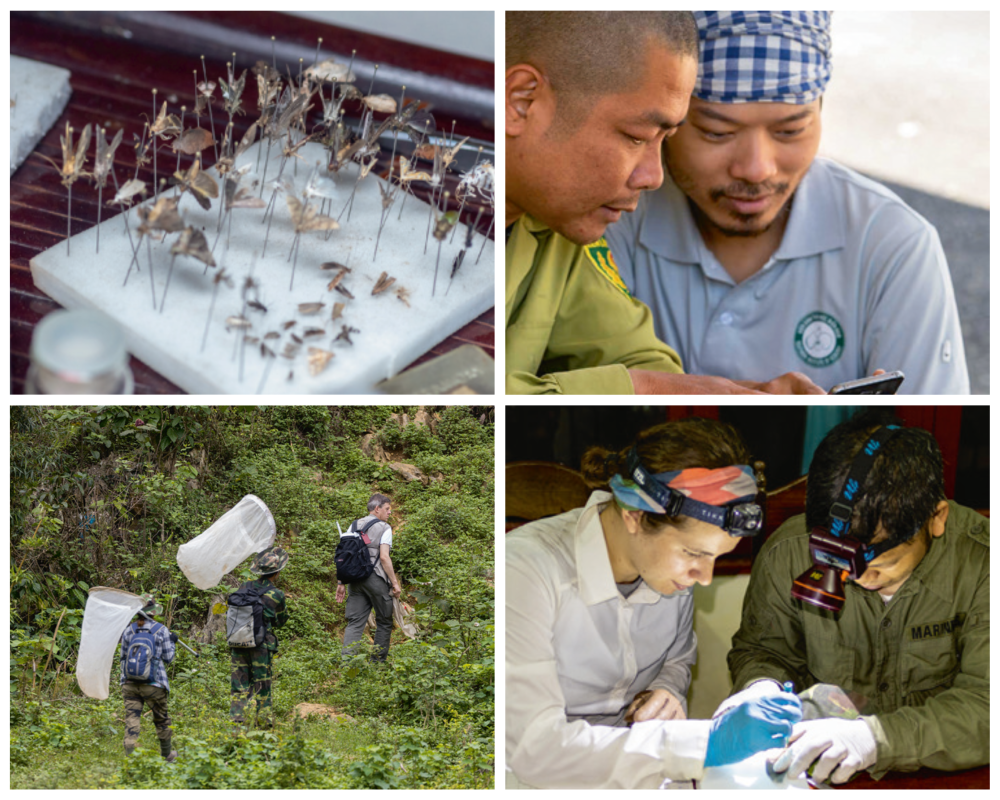
Time is pressing, in Vietnam as everywhere else
Now that the project with Vietnam has been completed, it is hoped, biodiversity discovery in Vietnam will move much faster than before. Time is pressing, as it is everywhere else. For above all, deforestation, agricultural overuse, hunting, climate change and forest fires are increasingly taking their toll on the country's valuable ecosystems.
"Unfortunately, social awareness of the value of ecosystem services and biodiversity is still low in Vietnam," says biologist Do Van Tu from the Institute of Ecology and Biological Resources in Hanoi, who found the new freshwater shrimp species together with Thomas von Rintelen. "Through VIETBIO we have already been able to gain a large amount of data that will be important for biodiversity research and conservation, we now want to continue this work."
The four participating research institutions in Vietnam have also received technical equipment from the Federal Ministry's budget, for example for genetic analyses, for digitising plants or for recording animal sounds. And if Thomas von Rintelen and Rudolf Meier have their way, the DiversityScanner will soon be used in Vietnam. Several collaborations with the Museum für Naturkunde on species discovery will continue after the end of the project, for example on butterflies, ants – and of course freshwater shrimp. The Vietnamese researchers have since found the blind cave shrimp in three other caves. But only after many hours of taxonomic work was it clear that it was indeed a new species. Under the microscope, they examined the shrimp's external shape, saw that its eyes are barely developed, its carapace does not taper to a pointed tail and it has very slender legs.
This morphological examination was already enough to assume that it was very likely a new species. But only a DNA sequencing in Berlin, the result of which was matched with freely available data from the worldwide GenBank database, confirmed the thesis. They named the newly discovered Caridina thachlam – Caridina for the genus within the freshwater shrimps and thachlam after one of the caves where they live so.
Text: Mirco Lomoth
Pictures: Pablo Castagnola, Bernhard Schurian
